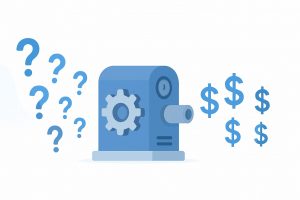Pricing is never a one-time decision. In SaaS, ongoing research and calibration are essential to maintaining revenue growth while keeping customer satisfaction high. The challenge lies in knowing when and how to adjust pricing without causing unnecessary churn. Here’s how companies can refine their pricing strategy through continuous research and data-driven decision-making.
When and How to Raise Prices Without Churn
Raising prices is a natural part of scaling a SaaS business, but it must be handled strategically to avoid backlash. Here are key considerations:
- Monitor Value Perception: Regularly gather customer feedback to understand whether your product’s perceived value aligns with the price. If customers see increased functionality, efficiency, or ROI, they are more likely to accept a price increase.
- Segment Customers by Usage and ROI: Not all customers will experience your product the same way. High-value customers, who derive significant business outcomes from your software, will be more willing to pay for additional features or better service.
- Introduce Changes Gradually: A phased approach—starting with new customers before adjusting existing contracts—can minimize resistance.
- Offer Grandfathering or Incentives: Allowing existing customers to keep their pricing for a period or offering incentives like extended contracts at current rates can soften the impact.
- Justify the Increase: Transparency is key. Clearly communicate why the price is increasing—whether due to expanded features, inflation, or increased operational costs.
Using Customer Segmentation to Refine Pricing
Customer segmentation allows SaaS companies to tailor their pricing strategy based on user behavior, needs, and willingness to pay. The key approaches include:
- Usage-Based Segmentation: Customers who use more resources or features can be charged at a higher tier. This ensures pricing aligns with value delivered.
- Firmographics & Industry-Based Pricing: Enterprise clients and high-revenue businesses often have different pricing expectations than startups or SMBs. Adjusting plans accordingly can maximize revenue.
- Customer Lifecycle Segmentation: New customers may be more price-sensitive, while long-term users who rely heavily on your platform may tolerate premium pricing.
- Geographic Pricing Adjustments: Consider adjusting prices based on regional economic conditions or local competition.
By leveraging segmentation, companies can implement price increases in a targeted manner, avoiding unnecessary churn among price-sensitive users.
Dynamic Pricing in SaaS
Unlike traditional static pricing models, dynamic pricing allows SaaS companies to adjust prices in real time based on various factors, including demand, usage, and competitive positioning. Here’s how to implement dynamic pricing effectively:
- Data-Driven Adjustments: Use historical customer data and predictive analytics to determine pricing thresholds.
- Value-Based Pricing Models: Charge based on outcomes delivered rather than fixed subscription fees (e.g., charging per API call, transactions, or revenue impact).
- A/B Testing Pricing Models: Experiment with different pricing structures to see what maximizes revenue without causing churn.
- AI & Machine Learning for Pricing Optimization: Advanced algorithms can analyze customer behavior and automatically adjust pricing to optimize conversion rates.
Dynamic pricing can be particularly effective in usage-based SaaS models, allowing businesses to align revenue with customer value and maximize profitability.
Final Thoughts
Pricing in SaaS is an ongoing process that requires research, experimentation, and customer insights. By continuously calibrating pricing strategies—through segmentation, controlled price increases, and dynamic pricing—SaaS companies can drive growth while keeping churn in check.





